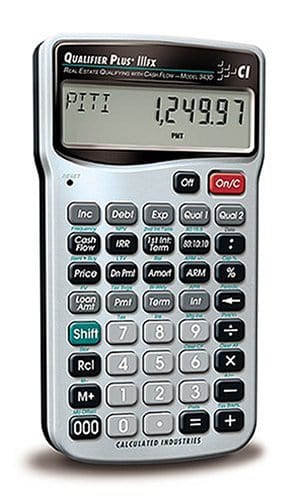
Portabilityįor those who need to perform financial calculations on the go, a calculator is a smart choice, as it fits in the palm of a hand. A calculator with 12 to 20 kilobytes of memory is above average. It also stores programming changes that you’ve made to the unit. This allows you to store data as you’re entering and using it.

Storageįinancial calculators have a bit of internal memory storage. Having dozens of characters visible simplifies the process of calculating complex equations. Instead, it’s measured in the number of characters and lines it can display at one time. The LCD screen on a financial calculator isn’t measured in size as it would be for, say, a smartphone screen. The majority of calculator batteries last one to five years, depending on frequency of use. The ease of replacing a battery varies from model to model, as does battery life. Some offer a solar power option, too, using the battery as a backup when light isn’t available. The majority of financial calculators run on battery power - usually round, coin-style batteries. Even basic will carry at least 50 built-in functions. But you will pay a higher price for this style of calculator. Powerful financial calculators carry a large number of built-in functions, perhaps 200 or more. The following features help set the financial calculators on the market apart from each other so you can decide which fits your needs. Always check with the entity administering the exam or with the course’s professor to figure out whether you need an exact model. However, the CFP exam rules don’t specify an exact model you must use.įor college courses or for certification exams like the CFA, you often must use a particular model of financial calculator. (These models often also can perform financial calculations.) Instead, you must use a financial calculator. If you plan to use your financial calculator for an advanced college course or for a financial certification exam, only certain models will have the capability you require.įor example, with the CFP exam, you cannot use scientific graphing calculators. Certain financial classes also require a calculator with advanced functionality. However, they often will not perform reverse Polish notation (RPN) calculations.įinance professionals will need a high-end model capable of performing complex calculations. These units often will offer time value of money (TVM) calculations. Plans for useįor those who only need a calculator for an entry-level financial class or calculating simple loan terms, a basic financial calculator works nicely.

Here are some high-level items to consider when shopping for a financial calculator. This may be a small light built into the hardware, or it may be an extra display character on the screen, like an asterisk. Some financial calculators will have a low battery warning. In this buying guide, we outline some of the key items to consider when shopping for a financial calculator. To find the best financial calculator for your situation, it helps to understand the various functions these units can perform.

A monochrome display screen across the top shows both numbers and letters. They have small keys that are marked with the functions they provide.

Both types of calculators are handheld devices that fit in the palm of your hand. If you’ve used a scientific calculator in the past, a financial calculator will look familiar to you. It has extra keys to help you make these complex calculations quickly and efficiently. However, it can also calculate things like compound interest payments and rate conversions. Whether you’re enrolling in a business class, taking a financial certification standardized test, or calculating payments on a loan, a financial calculator is a tool you’ll need.Ī financial calculator can perform simple mathematical calculations like any handheld calculator. Buying guide for best financial calculators


 0 kommentar(er)
0 kommentar(er)
